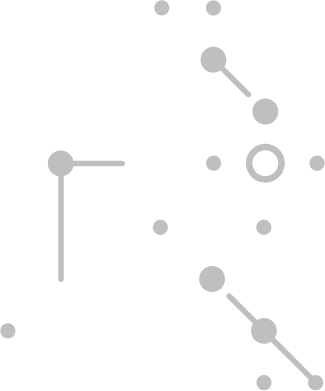



AI in Container Orchestration: Is the Revolution Just Around the Corner?
2024-10-09 12:07:37Since Docker's introduction in 2013, containers have been continuously gaining popularity. They have simplified the process of creating, deploying, and managing apps on any infrastructure and become the de facto standard in the cloud-native world.
Companies handling thousands of containers can use orchestration to streamline much of the operational effort necessary to run containerised workloads and services. Orchestrating container lifecycle tasks also supports DevOps teams, which can integrate it into CI/CD.
Just like the AI revolution is reconfiguring other software development fields, great changes also await container orchestration. Algorithms can solve many issues DevOps teams face in large enterprise orchestration systems.
Although we’re still missing large-scale solutions, the estimated value of AI in container orchestration will likely grow. It is, therefore, essential to understand the opportunities and possibilities that arise from using algorithms for managing containers. Read on to learn more.
What are the key benefits of container orchestration?
Container orchestration is crucial in working with containers as it lets companies unlock their full benefits. Its most important benefits include:
Easier operations: As useful as containers are, they can add to your overall IT complexity and spiral out of control. A container orchestration system helps to prevent that. Some everyday tasks you may want to handle with orchestration include configuration and scheduling, resource allocation, load balancing and traffic routing, monitoring container health, and many more.
Improved resilience: container orchestration solutions can boost your resilience by restarting or scaling your containers when it’s necessary.
Security: automated operations contribute to your containerised apps’ security by reducing the odds of human error.
As you will see in the later part of this text, AI can greatly enhance these benefits and expand the capabilities of containerised applications.
How does container orchestration work?
While the history of containers started with Docker, the title of the most popular container management platform today belongs to Kubernetes (K8s). As the second largest open-source project in the world after Linux, it is the primary container orchestration tool for 71% of Fortune 100 companies. Let’s consider the K8s case to illustrate how container orchestration works in general.
In Kubernetes, your app’s configuration comes in a YAML or JSON file with key instructions, such as where to locate container images or establish a network. When deploying a new container, the platform automatically schedules it, identifying the right host and considering all its requirements and limitations.
The orchestration tool then manages the container according to the specs in the file. It ensures that the current state matches the desired state by scheduling and deploying containers, managing network, storage, and load balancing, but also scaling apps as needed.
Container orchestration has the potential to take many tasks off the DevOps plate. However, it can be tedious due to K8s’ complexity, steep learning curve, manual configuration, and the need for ongoing monitoring and maintenance.
That’s precisely why AI-driven automation can be a game-changer in Kubernetes management.
Seven container orchestration issues and how AI can help fix them
The marriage of Kubernetes and AI is already transforming container orchestration, making it more efficient and more autonomous.
By removing manual tasks and optimising resource allocation, Artificial Intelligence enhances cluster management and allows teams to get more value from their containerised apps.
Here are the seven key container orchestration areas where AI’s value is evident:
#1: Scheduling Pods to appropriate nodes
Basic Kubernetes scheduling mechanisms may not be good enough with many different
node types.
An AI system can use past and present data to indicate the best nodes for your Pods, reducing your K8s waste and cost.
#2: Automated scaling of resources
This issue refers to increasing or decreasing the number of nodes or Pods following your workload’s needs. Although current solutions can do this quite well, setting resource limits and requests can be problematic.
AI can learn your traffic patterns and react earlier to reduce issues for the user when scaling up by accessing necessary resources. It can also automatically scale resources down to reduce costs at times of low load.
#3: Intelligent Load Balancing
Load balancing systems are already quite well developed, but maintaining them for large clusters with nodes spread across various data centres can be challenging.
By adding AI into a system, it becomes possible to find the best ways to reroute traffic. Together with intelligent scheduling, this feature can help to schedule Pods in locations with the lowest latency for given user groups.
#4: Monitoring and auto-healing capabilities
Ensuring adequate monitoring and problem discovery can be complicated in large IT systems. By accessing all metrics, AI can monitor them in real time in search of anomalies.
Once it detects a problem, the AI-driven feature can identify its nature and either fix it on the spot with k8s tools or notify developers or administrators. It can also automatically roll back changes if the system proves unstable.
#5: Resource allocation
Each Pod in the cluster has specific resources allocated that it can use. Finding the right balance between the allocated resources and their use takes work.
Fed on the right data, AI-driven mechanisms can dynamically adjust the number of resources required at any given time, saving you time and money.
#6: Security
Many security issues can go wrong in large systems—think about incoming certificates, open ports, and more vulnerabilities.
An AI-powered system can use best practices, logs, status, and metrics to find all vulnerabilities in the cluster.
#7: Streamlining the work of devs and engineers
Creating manifests or relevant resources or commands is sometimes problematic.
AI systems can help developers create appropriate resources by writing in natural language or by finding issues in the cluster.
The state of AI in container orchestration
Despite the enormous opportunities, the adoption of container orchestration systems based on artificial intelligence is still relatively low.
This is due to the high degree of complexity of such systems and the fact that AI solutions rely heavily on data. Ensuring the quality and privacy of data used by AI systems is essential, which may require adjusting your enterprise policies before you can see the benefits.
However, administrators can already streamline different Kubernetes tasks with tools based on OpenAI ChatGPT. Primarily designed for terminal (CLI) usage, such solutions let engineers generate manifests and commands using natural language and check cluster status quickly.
Examples of open-source tools in this category include K8sGPT, kubectl-ai, and kube-copilot. Let’s now consider how they can boost your container orchestration efforts.
How can ChatGPT solutions fix your K8s orchestration issues?
Promising to “give Kubernetes superpowers to everyone”, K8sGPT simplifies scanning, diagnosing, and triaging issues within your cluster.
Its primary command—k8sgpt analyse—helps reveal all potential issues within your Kubernetes cluster. Its “analysers” define the logic of K8s objects like nodes, Pods, Replica Sets, Services, Network Policies, or even HPA and PDB.
When the tool spots such issues, it can also explain how to fix them, providing instructions and all the necessary kubectl commands.
Offering integrations with Prometheus and Trivy, K8sGPT lets you operate labels and check common issues.
Another solution – kubectl-ai – is a kubectl plugin for OpenAI GPT. It simplifies the process of generating Kubernetes manifests by providing you with ready-to-use YAML manifests based on your needs.
You can refine your results by adjusting specific parameters, and once you’re happy, apply your manifest in the cluster with ease.
Finally, Kube-Copilot is a multi-tool combining K8s auditing, troubleshooting, custom manifest generation, and perform-any-action functionality.
Using the native kubectl and Trivy commands, the solution lets you access and scan your cluster and look specifically for security problems your Pods may have. Finally, it also gives you access to Google search without leaving the terminal.
Summary
As container technology becomes standard, container orchestration is essential for managing apps, simplifying operations, and enhancing security.
Integrating AI into container orchestration platforms like Kubernetes promises to address the challenges and offer more optimal resource allocation, intelligent load balancing, and automated scaling.
Although adoption is still relatively low, solutions like K8sGPT already demonstrate the revolutionary impact algorithms can have on container orchestration.
As Kubernetes continues to evolve and AI systems become more sophisticated, you can expect further synergies between these two domains.
Now is the right time to discover the possibilities lying ahead. Contact us, and let’s discuss streamlining your container orchestration processes with AI.
About the author
Karol Górzyński is a versatile DevOps Engineer at TENESYS with expertise in cloud platforms like AWS and GCP. With over two years of experience, he focuses on managing cloud infrastructure, automating deployments, and improving system scalability through Kubernetes. Karol is adept at working with both AWS and GCP environments, optimizing cloud resources, and ensuring seamless integration and delivery processes. His ability to effectively handle multi-cloud environments makes him an invaluable asset to the team, consistently driving performance and innovation.
